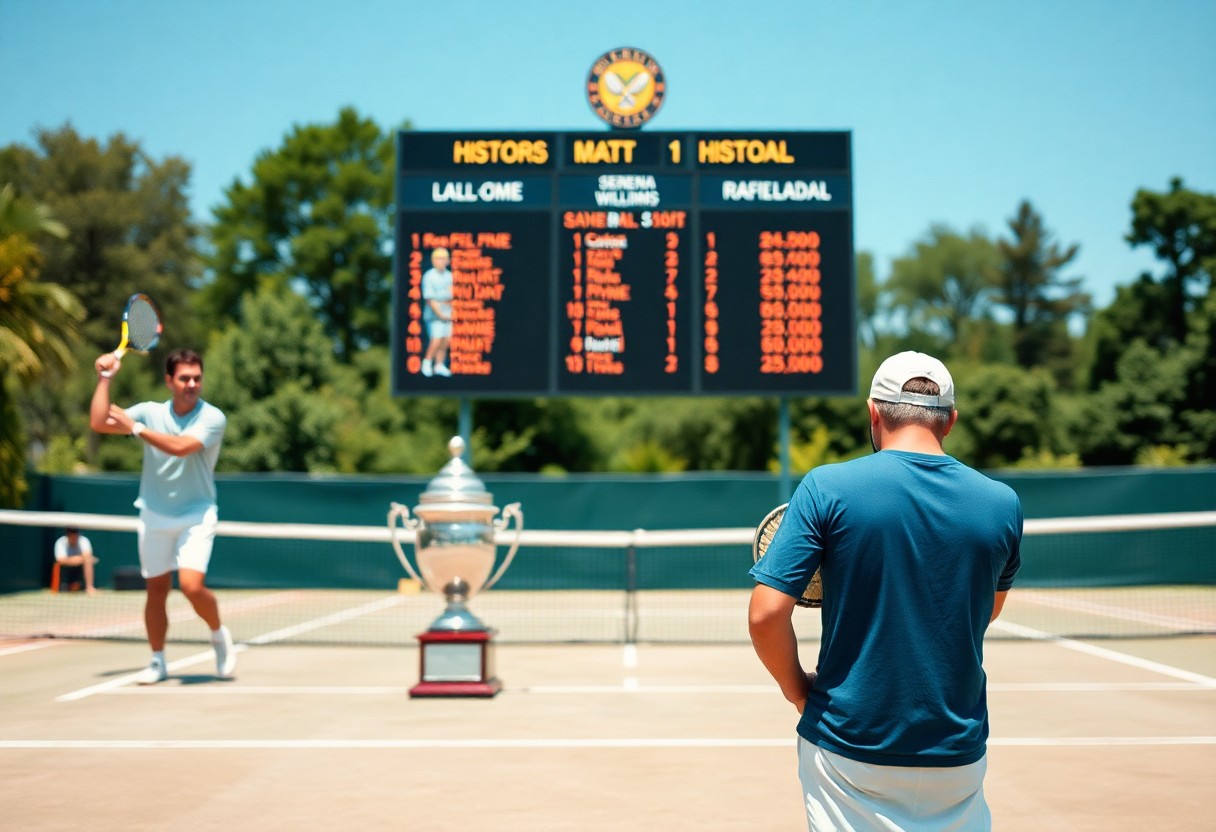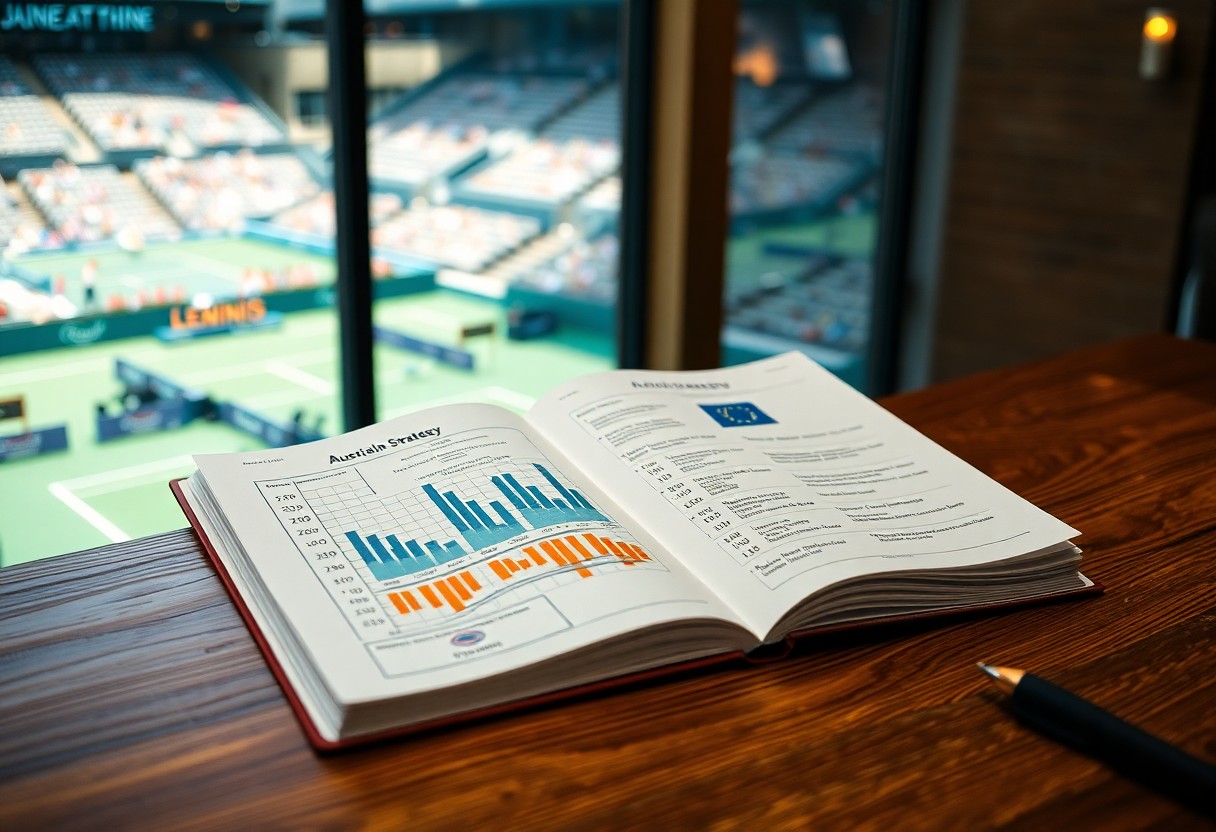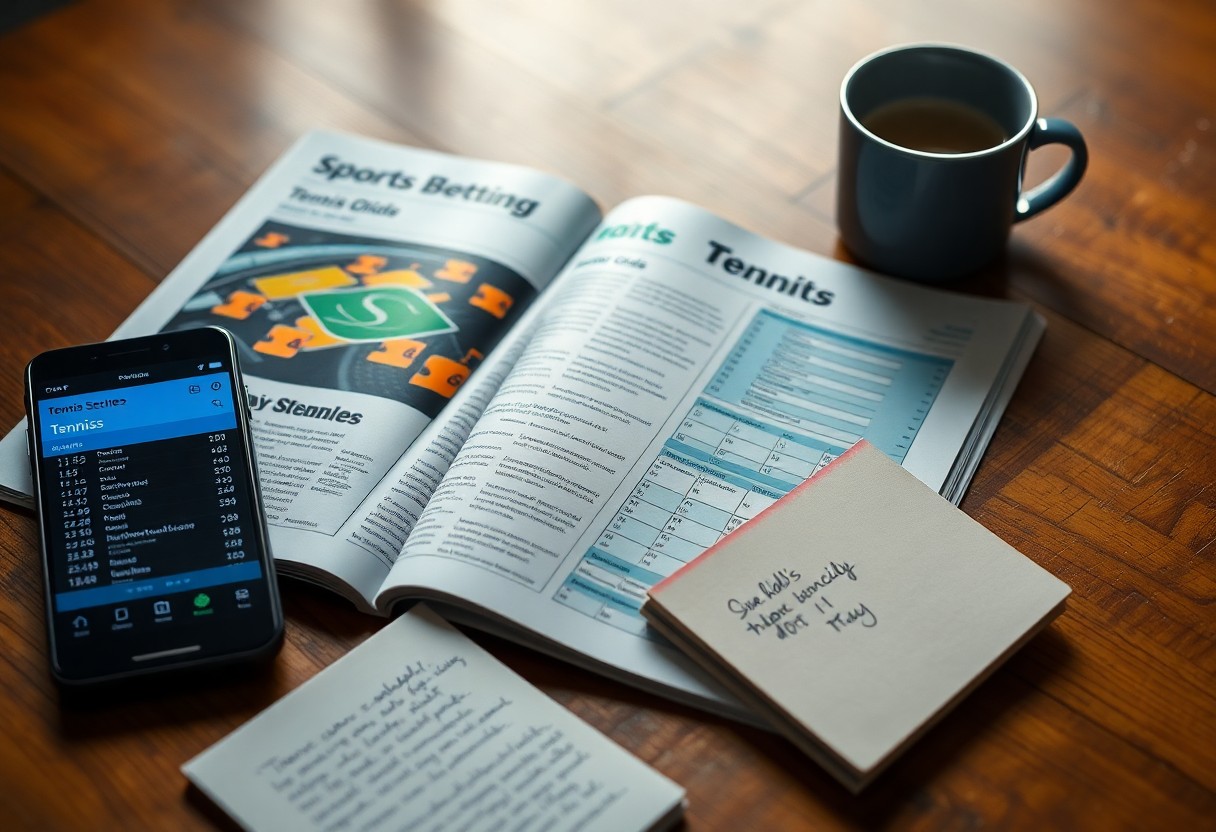Tennis has produced some of the most extraordinary athletes in history, each leaving behind valuable insights that transcend the sport. From the relentless work ethic of legends like Roger Federer to the unmatched mental fortitude exhibited by players such as Serena Williams, these icons provide lessons in discipline, perseverance, and sportsmanship applicable to all aspects of life. By exploring the experiences and philosophies of these tennis greats, we can glean profound strategies for achieving our own versions of success.
The Foundations of Greatness
At the heart of every legendary tennis player lies a foundation built upon discipline, resilience, and an unwavering commitment to improvement. These principles are not simply traits but refined habits that players such as Roger Federer and Serena Williams have embodied throughout their careers. Such foundations, established early in their journeys, set them apart on and off the court, shaping their mental approach and overall success.
The Importance of Mental Toughness
Mental toughness is the backbone of top athletes in tennis, allowing them to confront pressure and adversity head-on. Players like Novak Djokovic have shown that developing a strong mindset can be as vital as physical training. With the ability to maintain focus, withstand challenges, and bounce back from setbacks, mentally tough athletes often secure victories in critical moments.
Embracing Failure as a Learning Tool
Great tennis players view failure as a necessary stepping stone toward success. Instead of shying away from defeats, they analyze their mistakes to foster growth. For instance, Rafael Nadal famously uses losses to refine his strategies, ultimately bolstering his game and transforming setbacks into future triumphs.
Embracing failure not only builds resilience but also sharpens performance. After disappointing losses, champions engage in deep introspection, focusing on what went wrong and devising actionable insights for improvement. This approach fosters a growth mindset, where every match, win or lose, is seen as an opportunity to learn. For example, after losing in early rounds of Grand Slams, players often re-evaluate their techniques and mental strategies, leading to remarkable comebacks. This philosophy of turning failures into lessons underscores the journey toward excellence and shapes a player’s ability to perform under pressure in future matches.
Skill Development and Mastery
Mastery in tennis is a journey marked by persistent effort and a strategic approach to skill development. Athletes like Roger Federer and Serena Williams exemplify the commitment needed to refine every shot, develop tactical awareness, and build physical stamina. Their training regimens often include a blend of technical drills, match play, and mental conditioning, underscoring that becoming the best does not happen overnight but requires years of dedication.
Consistency and Repetition
Consistency forms the bedrock of success in tennis, as demonstrated by Rafael Nadal who is known for his relentless focus on repetitive practice drills. This method reinforces muscle memory, allowing players to execute shots with precision under pressure. Athletes often engage in hundreds of repetitions per session, turning seemingly simple strokes into second nature—important for high-stakes matches where every point matters.
Adapting Techniques for Different Styles
Adapting to diverse playing styles is important for conquering varied opponents. Novak Djokovic, for instance, showcases remarkable versatility in matching his gameplay to counter aggressive baseliners or net rushers, shifting tactics seamlessly to exploit weaknesses. This adaptability often involves altering grip, stance, or shot selection to achieve optimal effectiveness against specific opponents.
Djokovic’s ability to analyze and tweak his approach is evident in his matches against players with contrasting styles. For example, when facing a powerful server like John Isner, Djokovic tends to position himself deeper behind the baseline, giving him more time to react effectively to serves. Alternatively, against a player like Federer, he might shift forward to intercept and take control of rallies early. Such adjustments are not only strategic but demonstrate a high level of court intelligence that is critical for success in the ever-evolving landscape of professional tennis.
The Role of Sportsmanship and Respect
In tennis, the importance of sportsmanship and respect transcends the scoreboard, shaping a player’s reputation and influence on the game. Legends like Roger Federer and Rafael Nadal exemplify this ethos, consistently demonstrating graciousness both in victory and defeat. Their interactions not only foster mutual respect among competitors but also inspire younger generations to embrace humility and integrity, reinforcing that true greatness extends beyond championship titles.
Lessons from Iconic Rivalries
Iconic rivalries, such as those between McEnroe and Borg or Federer and Nadal, provide a masterclass in sportsmanship. These players, despite fierce competition, have shown that respect can coexist with intense rivalry. Their mutual acknowledgments on and off the court highlight that a spirit of sportsmanship enriches the competition, crafting legacies intertwined with admiration and respect for each other’s abilities.
The Impact of Character on Legacy
A player’s character plays a vital role in shaping their legacy within the sport. Icons like Arthur Ashe have used their platform to advocate for social justice, intertwining their on-court achievements with profound societal contributions. This commitment not only elevates their impact in tennis but also influences future players to approach the game with greater purpose and empathy, ensuring that their legacy is grounded in values as much as victories.
Character extends beyond personal achievements; it molds perceptions and inspires actions within the sport. Players such as Billie Jean King and Andre Agassi have demonstrated that an athlete’s resolve in advocating for equality and innovation within tennis solidifies their standing in history. The admiration they earn from fans and peers stems from their ability to blend excellence in performance with a steadfast commitment to causes that resonate deeply with human experiences. This alignment of values and actions is what makes their legacies enduring and transformative in shaping the sport’s future.
Training Regimens of Legendary Players
Training regimens of legendary players are meticulously designed to optimize performance on the court. Players like Roger Federer and Serena Williams meticulously blend strength training, agility drills, and skill-specific practice to enhance their game. For example, Federer’s focus on footwork and court positioning has allowed him to maintain exceptional speed and endurance, while Williams combines power workouts with precision drills to keep her serve dominant. This comprehensive approach ensures that athletes remain competitive against evolving gameplay styles.
Physical Conditioning Strategies
Physical conditioning strategies among top tennis players often emphasize a combination of strength, agility, and endurance training. Novak Djokovic integrates yoga and pilates into his regimen, enhancing flexibility and balancing his physical prowess. Similarly, Rafael Nadal’s training focuses on building explosiveness through high-intensity interval training, allowing him to chase down every ball with remarkable agility. Such tailored routines enable these athletes to sustain peak performance levels throughout grueling matches.
Mental Preparation Techniques
Mental preparation techniques are integral to the success of elite tennis players. They often engage in visualization, enabling them to mentally rehearse match scenarios and visualize successful outcomes. Players like Andre Agassi utilized self-talk to bolster confidence and maintain focus during high-pressure situations. Techniques such as mindfulness and meditation have also gained traction, helping players manage stress and enhance concentration, particularly in critical match moments.
Mental preparation techniques are pivotal in shaping a player’s mindset, significantly influencing performance. Visualization practices, where players envisage specific match situations, help them build confidence and familiarity with their strategies. For instance, before pivotal matches, players like Naomi Osaka often dedicate time to visualize their game plan, preparing mentally for various scenarios. Self-talk, another technique, is used to foster a positive internal dialogue, combating anxiety during tense moments. Moreover, employing mindfulness practices allows athletes to remain focused and composed under pressure, ensuring that mental clarity translates into effective on-court decision-making.
The Influence of Coaching
Coaching plays a pivotal role in shaping the careers of tennis greats, often providing the tactical and psychological frameworks necessary for achieving excellence. Coaches like Nick Bollettieri and Patrick Mouratoglou have not only trained champions but also instilled the belief and resilience needed to thrive under pressure. Their influence extends beyond technical skills, emphasizing mental toughness which is indispensable in high-stakes matches.
The Importance of Mentorship
Mentorship in tennis is instrumental, with seasoned coaches offering guidance that often extends beyond the baseline. Many top players attribute their successes to mentorship, which fosters mental fortitude and strategic development. Legends like Serena Williams have credited their coaches for nurturing talent and providing a support system that enables them to navigate the competitive landscape effectively.
Strategies from the Best Coaches in History
Top coaches in tennis utilize various strategies that have proven effective in developing world-class talent. These include tailored training programs focused on individual player strengths, as well as psychological techniques to enhance focus and resilience. For instance, Ivan Lendl emphasized a disciplined approach to fitness and mental conditioning, reflecting on how physical preparedness correlates directly with on-court confidence.
Moreover, strategies often incorporate video analysis to dissect a player’s performance, allowing for targeted improvements. Coaches like Toni Nadal implemented strict routines and technical drills that honed Rafael Nadal’s relentless playstyle. This combination of personalized coaching and innovative training methods has repeatedly led players to reach their highest potential, reinforcing the impact of effective coaching in tennis history.
The Evolution of the Game and Strategy
The evolution of tennis has been marked by significant changes in playing style and strategy, reflecting shifting athletic standards and audience expectations. Players now combine traditional techniques with modern training to enhance agility, power, and precision. The increasing emphasis on fitness has led to longer rallies and intense physical contests, reshaping match dynamics and audience engagement.
Adapting to Changes in Play
Adapting to changes in play has become necessary for competitive success. As players refine their skills, strategies like the serve-and-volley approach have evolved into baseline dominance. Athletes must continuously adjust their tactics, learning to exploit opponents’ weaknesses while enhancing their strengths, resulting in an ever-changing competitive landscape.
The Impact of Technology on Tennis
The impact of technology on tennis has reshaped how the game is played, coached, and consumed. Innovations like Hawk-Eye revolutionized line-calling accuracy, fostering a more fair playing environment. Additionally, data analytics now guide training and match strategies, enabling players to dissect every aspect of their performance with precision.
Coaches and players utilize advanced performance-tracking software and wearables to monitor metrics such as stroke speed and fatigue levels, fine-tuning training regimens accordingly. The introduction of high-speed cameras allows for detailed analysis of serves and swings, enhancing technique refinement. Moreover, fan engagement has soared, with real-time stats and interactive broadcasts transforming how audiences experience matches. This technological integration not only elevates the sport’s competitive framework but also enhances the overall spectator experience, making tennis more dynamic and accessible than ever before.
Conclusion
So, the lessons derived from the greatest tennis players in history transcend the sport itself, offering insights into discipline, resilience, and mental fortitude. Through their journeys, we learn that greatness is not solely defined by victories but by the dedication to continuous improvement and the ability to overcome adversity. These timeless principles provide a foundation for success, inspiring individuals both on and off the court.
FAQ
Q: What lessons can readers learn from ‘Greatness On The Court’?
A: Readers can learn invaluable insights about discipline, resilience, and strategic thinking from the experiences and philosophies of legendary tennis players. The book emphasizes the importance of mental fortitude and perseverance in achieving greatness both on and off the court.
Q: How does the book highlight the impact of sportsmanship in tennis?
A: The book showcases examples of sportsmanship from top players, illustrating how integrity and respect for opponents contribute to a positive sporting environment. It highlights stories of humility and grace in both victory and defeat, serving as a model for aspiring athletes.
Q: What is the target audience for ‘Greatness On The Court’?
A: The book is designed for tennis enthusiasts, coaches, and athletes at all levels who wish to deepen their understanding of the game. It also appeals to anyone interested in personal development through the lens of sports history and the achievements of iconic players.




